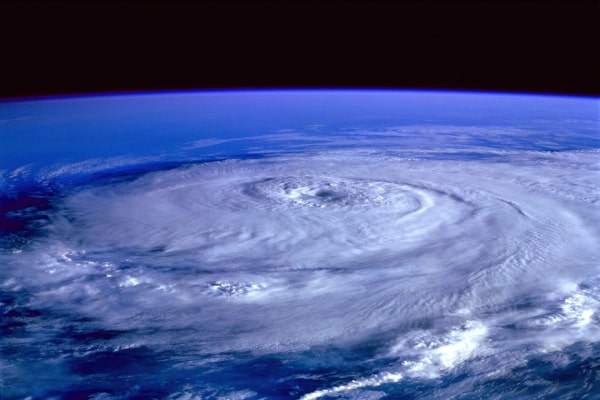
Hurricanes can be incredibly damaging to homes, businesses, and entire communities. Knowing when hurricane season is and how to prepare can help protect yourself, your family, and your property. Let’s look at what hurricane season is and when it typically occurs.
What is hurricane season?
Hurricane season is the time of year when storms with tropical characteristics are most likely to form in the Atlantic Basin. It officially begins on June 1st each year and ends on November 30th, although storms have been known to occur outside of this period. During these six months, hurricanes can develop from tropical depressions or tropical waves that originate from the African coast and other sources, such as disturbed weather systems in South America or the Caribbean.
When Does Hurricane Season Occur?
In the Atlantic basin, hurricane season generally peaks between mid-August and late October. This is due to increased sea surface temperatures which provide ideal conditions for hurricane development during these months. While hurricanes can occur anytime during the official hurricane season, most tend to form between August and October.
What are some tips for preparing my home for hurricane season?
Hurricanes cause destruction and devastation wherever they go. As we enter hurricane season, it’s important to understand how to properly prepare your home so you can be ready in case of a storm.
Check Your Insurance Coverage
It’s important to make sure you have adequate insurance coverage that will protect your home if a hurricane strikes. Make sure you check with your insurance carrier before the start of the season to ensure you’re adequately covered in case of a storm. If your policy doesn’t cover hurricane damage, ask about adding that protection before it’s too late.
Create an Emergency Plan
In the unfortunate event that a hurricane does strike, it’s important to have an emergency plan in place. Hence, everyone knows what to do in case of an evacuation or other emergency situation. Make sure everyone knows where the emergency supplies are stored and where they should go if an evacuation is ordered. Also, ensure every family member has all their important documents stored somewhere safe should an evacuation become necessary.
Prepare Your Home
You can take some steps to prepare your home for hurricane season before bad weather hits. Check your roof, gutters, and windows for any damage, and make necessary repairs as soon as possible, so they aren’t damaged during a storm. It’s also wise to trim any trees or limbs near your home that could potentially become dangerous during high winds or heavy rains during a hurricane. Finally, be sure all outdoor furniture is tied down securely, as these items can become dangerous projectiles during storms with strong winds.
How can I be prepared for hurricane season?
Hurricane season is upon us, and it’s important to be prepared in the event of a hurricane or other severe weather. Taking proactive steps can help protect your home, property, and family during a storm.
Clean Out Gutters & Downspouts
Gutters and downspouts can become clogged with debris after periods of heavy rain. This means that when a large amount of water is suddenly dumped on your roof during a hurricane, it won’t have anywhere to go. To prevent this from happening, clean out all gutters and downspouts before hurricane season begins.
Trim Trees & Shrubs
Strong winds can easily uproot trees and shrubs during a hurricane. Make sure to trim any overgrown branches before the storm hits; this will reduce the chance of them becoming airborne projectiles in strong winds. It’s also important to inspect any dead trees on your property, as they can become hazardous if they are uprooted during a storm.
Secure Potential Projectiles
Take the time to walk around your property and secure potential projectiles such as patio furniture, grills, toys, etc. Make sure these items are anchored securely or put away in storage until after the storm has passed. This will help minimize damage to your property caused by flying objects during high winds.
How can I protect my home from wind damage?
The wind can be a powerful force that wreaks havoc on homes and properties. That’s why it is important to take steps to protect your home from wind damage. In this blog, we will provide tips to help you make sure your home is as safe and secure as possible during the next strong gust of wind.
Tree Maintenance
One of the most common causes of wind damage is falling trees or branches. To avoid this problem, it is important to keep your trees well-maintained by pruning them regularly and ensuring they are healthy. Also, consider removing any dead or dying trees on your property, as these are more likely to topple during a storm.
Secure Loose Items Around Your Home
Gusts of wind can easily pick up loose items around your property and send them flying into your house or other structures. To prevent this, ensure all outdoor furniture, decorations, and other items are securely fastened down before a storm hits. You should also check that all windows and doors are closed tightly to prevent strong winds from entering your home.
Install Wind-Resistant Features on Your Property
Certain features can be added to both new and existing homes to increase their resistance to wind damage. For example, installing hurricane shutters helps protect windows from flying debris during high winds; adding roof straps helps to secure the roof against uplift forces; and anchoring large objects like decks or sheds can help keep them in place during strong gusts of wind.
What are some tips for protecting my home from flooding?
Floods are a major cause of property damage, with losses totaling an estimated $8.2 billion per year in the United States alone. Unfortunately, there is no foolproof way to protect your home from flooding. However, there are steps you can take to help minimize the potential damage caused by flooding and keep your family safe.
Elevate Your Home Above Potential Flood Levels
One of the best ways to protect your home from flooding is to elevate it above the potential flood level of your area. If your house is elevated enough, any water that does enter will be quickly drained away by gravity. There are several ways to elevate a home, such as building on stilts or elevating it with piers or posts. While this may seem daunting, it can be done relatively cheaply and easily if you have access to the right materials and tools.
Install Check Valves and Backflow Preventers
Check valves and backflow preventers can help protect against flooding by blocking water from entering the house through sewer pipes or drains. Installing these devices will help ensure that any water that does enter will not be able to flow back into your house through plumbing fixtures or other openings in your foundation. This is especially important if you live in an area prone to floods since these devices can help prevent sewage backup and floodwater intrusion.
Seal Your Basement and Foundation Walls
Sealing basement walls and foundation walls can also help protect against flooding. Sealing cracks and joints between wall panels will help keep out floodwaters while preventing moisture from seeping into the basement or foundation walls—a common problem in areas with high humidity levels or lots of rain. Additionally, installing sump pumps in basements can further reduce the risk of flooding by pumping out water before it has a chance to accumulate inside your home’s living space.
Conclusion
Protecting your home from flooding doesn’t have to be an overwhelming task; there are many steps you can take that don’t require much effort but still yield big results! Elevating your home above potential flood levels, installing check valves and backflow preventers, sealing basement and foundation walls, and installing sump pumps all represent inexpensive solutions that will pay off greatly if ever faced with a flood situation! Taking these proactive measures now may save you time, money, peace of mind—and even lives—in the future!
